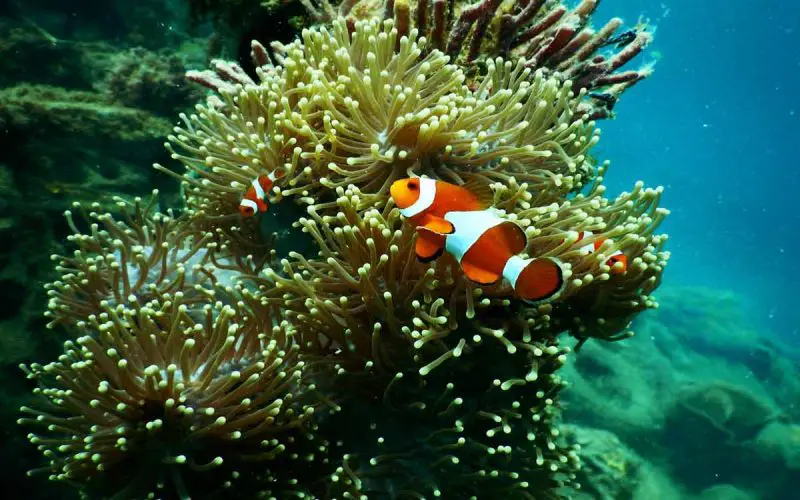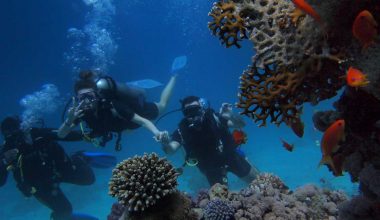Table of Contents Show
What are Coral Reefs?
Coral polyps are tiny, soft-bodied, translucent organisms related to sea anemones and jellyfish that have a symbiotic relationship with colorful, multi-faceted Zooxanthellae type of algae.
Polyps are usually less than 12 inches in size and have been on this planet since 50 million years. However, recent changes in ocean chemistry have put serious pressures on coral populations.
One of those changes in Ocean chemistry is Ocean Acidification.
What is Ocean Acidification?
Ocean acidification is the decrease in pH of ocean water. This occurs when the ocean starts directly absorbing Carbon Dioxide from the atmosphere. This is why burning of fossil fuels (which release CO2) is known to be the main cause of ocean acidification.
Ocean acidification is the result of cars releasing vast amounts of Carbon Dioxide in the atmosphere. However, there are other causes of higher CO2 concentration in the atmosphere as well.
Back to the main article; there are some major causes of Ocean Acidification which we will be discussing ahead.
How Ocean Acidification tends to Affect Coral Reefs
Increasing Temperatures
Polyp colonies live in warm water with temperatures between 21 and 29 degree Celsius. They cannot produce their own food and have to rely on other organisms.
They depend on two organisms; the photosynthetic zooanthellae (who require shelter in return) or on the barbed (which have venomous tentacles to trap small tiny fishes and zooplankton).
As water temperature increases, there is a corresponding increase in acidification of sea water.
The relation between algae and corals is very symbolic and gets harmed by ocean acidification. Coral reefs are already struggling to survive in increasingly warm ocean waters which put them in greater jeopardy.
This is because coral reefs are quite sensitive to ocean acidification. Ocean acidification stops corals from being able to form their skeleton as quickly as they do. Eventually, polyps start to collapse and disappear.
Industrial Revolution
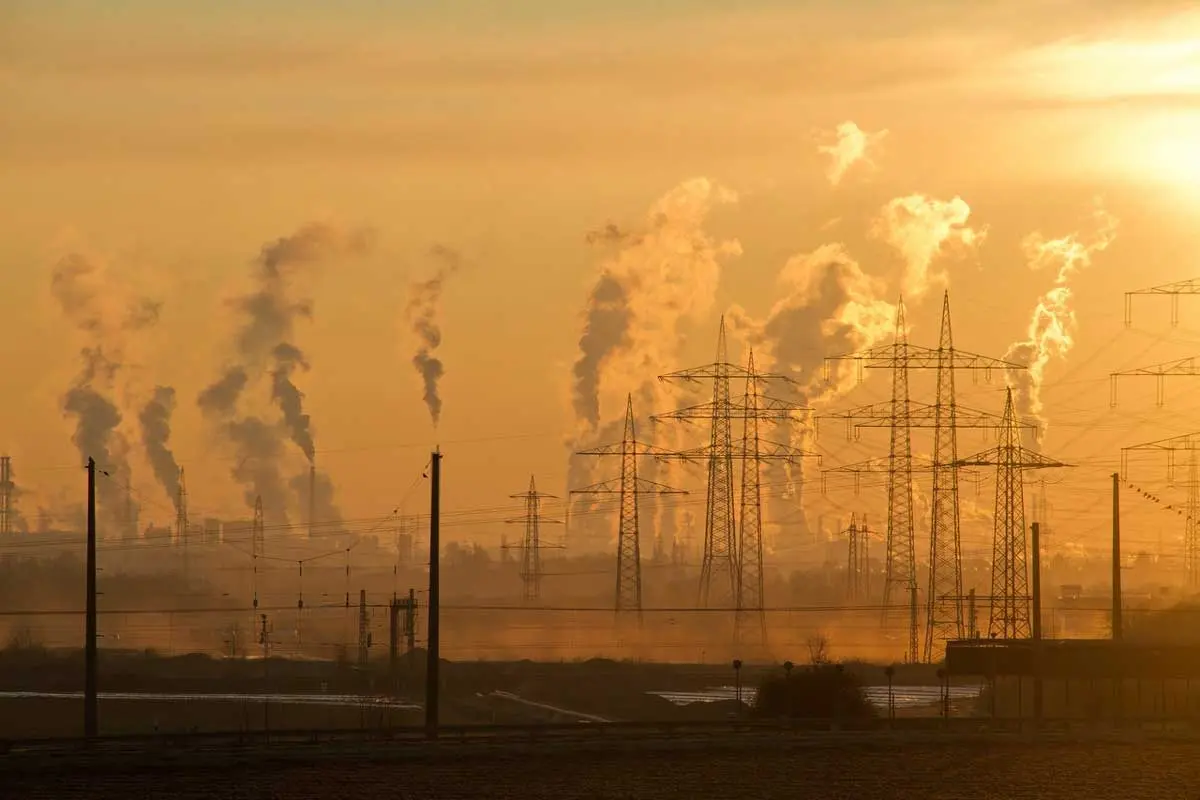
The oceans regulate climate and provide the earth with most of its oxygen. However, we are now certain of one amazing fact; there is constant battle between the power of oceans to create life and our constant needs to destroy it.
This statement is based on our activities that have drastically raised carbon dioxide levels in the atmosphere; creating new problems for oceans. As discussed, Carbon dioxide pollution is changing the chemistry of ocean very rapidly making water more acidic.
Ocean acidification is one of the major threats on the oceans health, a crucial issue that doesn’t seem to back down in near future.
There are many sources of ocean acidification like fossil fuels burned in cars, industries, farming, other sources of greenhouse gases and many more.
Since industrial evolution in 18th century, ocean acidification has increased by 30%. Oceans are absorbing roughly one-quarter of the CO2 produced by burning fossil fuels. This means almost 22 million tons get mixed in with ocean water every day. In terms of chemistry, this mixing leads to formation of an acid, H2CO3.
There has already been a 0.1 degree unit change in pH since the industrial revolution.
Small number, right? Wrong!
This 0.1 unit change in pH from 8.2 to 8.1 has resulted in devastating effects on coral reefs which are being seen around the world.
Changes in Chemistry
As we know 2/3 of the earth is covered by water. This makes it a perfect habitat for many animals, plants and reptiles like fishes, frogs, sea horses.
Amongst all these marine species, many build their own protective shells for survival. These shells range from paper-thin layers formed by drawing certain molecules from surrounding water to hard rock-solid ones formed by deposition of minerals.
Unfortunately, rising acidity disrupts and destabilizes the interaction between molecules. This results in difficulty making essential building blocks of shell formation like calcium carbonate (more specifically Aragonite). When Aragonite levels fall too low, organisms like corals have to work more vigorously to build their shells.
Here’s an image that shows effects of Ocean Acidification on calcification ability of sea shells.
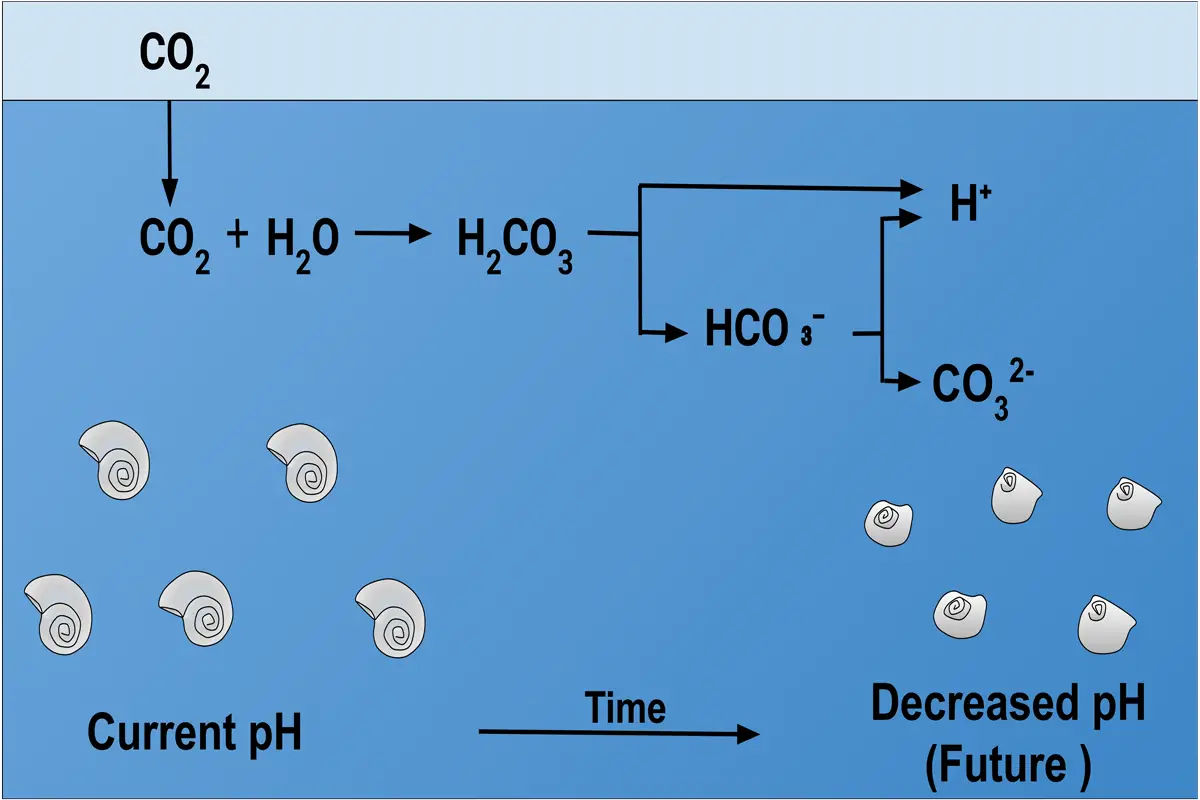
This results in organisms having less energy left for other vital functions like feeding, reproduction and evading predators. Eventually, the organism can no longer compete ecologically, slowly losing its position in the ecosystem.
Decreasing pH
Ocean acidification plays a great role in changing the physiology of ocean water; mainly by changing its pH value.
The pH value of ocean water changes when carbon dioxide reacts with water forming carbonic acid (H2CO3). The acid dissociates further to form hydrogen ions and bicarbonate ions, which can again dissociate forming hydrogen ions and carbonate ions.
Here’s a small chemical equations for those with a chemist brain.
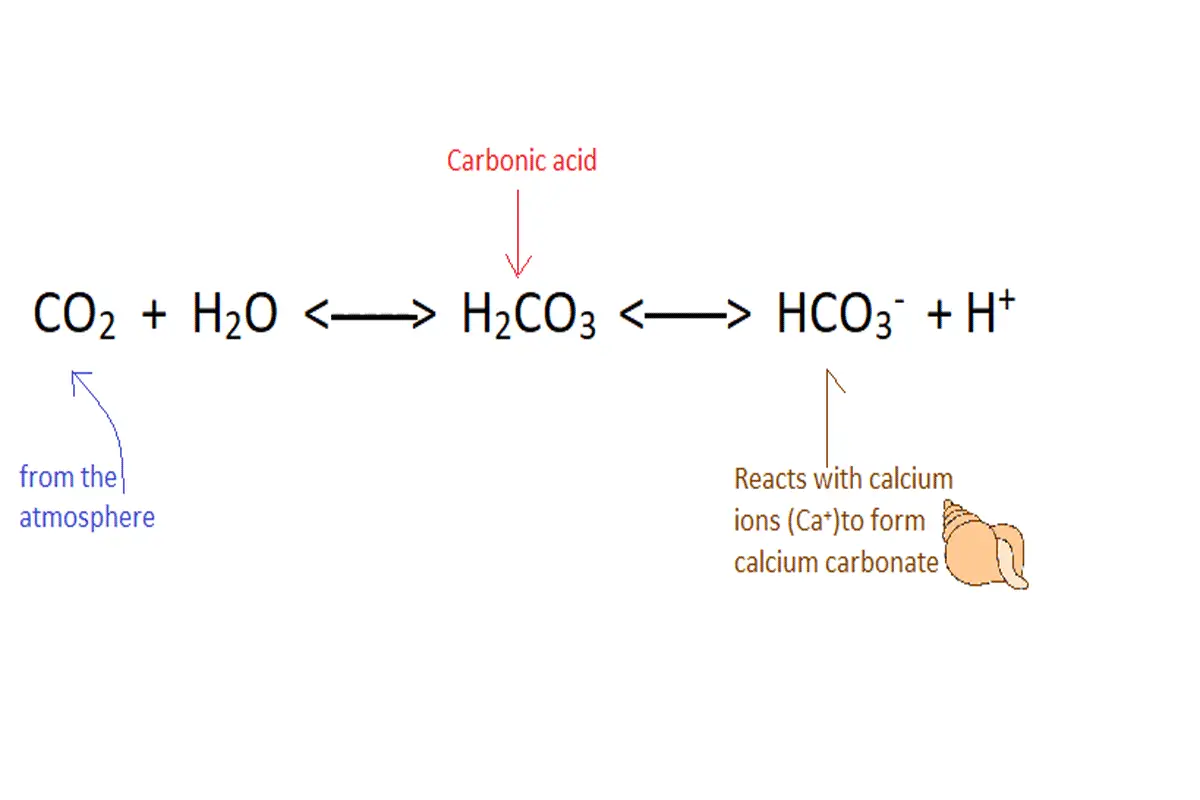
These free hydrogen ions in ocean water increase the acidity of water (basically decreasing pH of water). This destabilizes the bonds between atoms and molecules of skeleton, leading to reduced growth and dissolution.
The alteration of environment results in disruption of cellular functions in marine organisms which negatively impacts their survival.
Ocean Acidification and Coral Bleaching
Coral bleaching, also known as whitening of corals is another major problem. This devastating problem can quickly lead to death of corals.
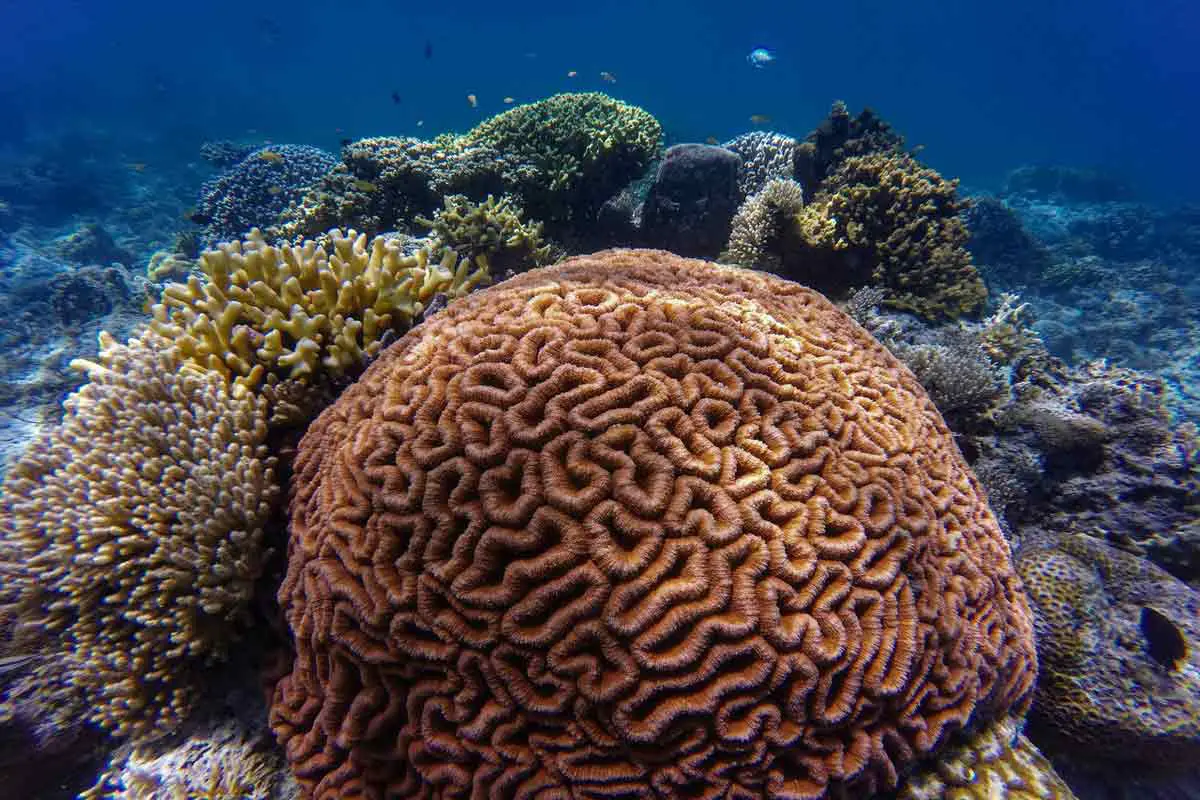
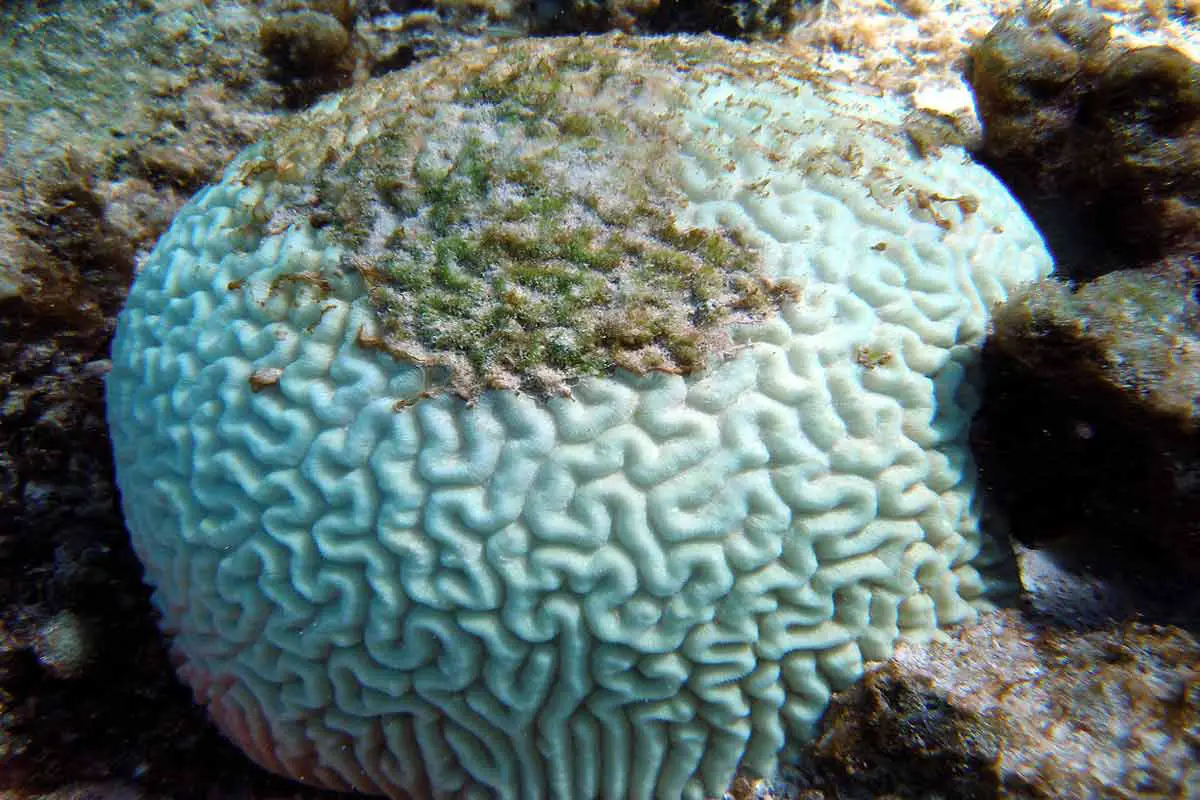
As we know that corals have a symbiotic relationship with algae; a combination of ocean acidification, global warming, and other environmental changes can put stress on corals. This stress makes the coral polyps expel the tiny small algae they need to survive.
This ‘bleaching’ process leaves only a white skeleton where there were vibrant colors. Bleached corals are, in actual fact, dead.
Ocean Acidification in the Great Barrier Reef (GBR)
The Great Barrier Reef is world’s largest coral reef ecosystem known to mankind. GBR consists of 2900 individual reefs and 900 islands stretching for 2300 kilometers. The Great Barrier Reef is located in the Coral Sea, off the coast of Queensland, Australia. You can even see it from outer space!
As a fact; it’s the World’s largest single structure made by billions of living organisms known as coral polyps. Great Barrier Reef Marine Park helps to protect it by limiting human activities like Fisheries and Tourism.
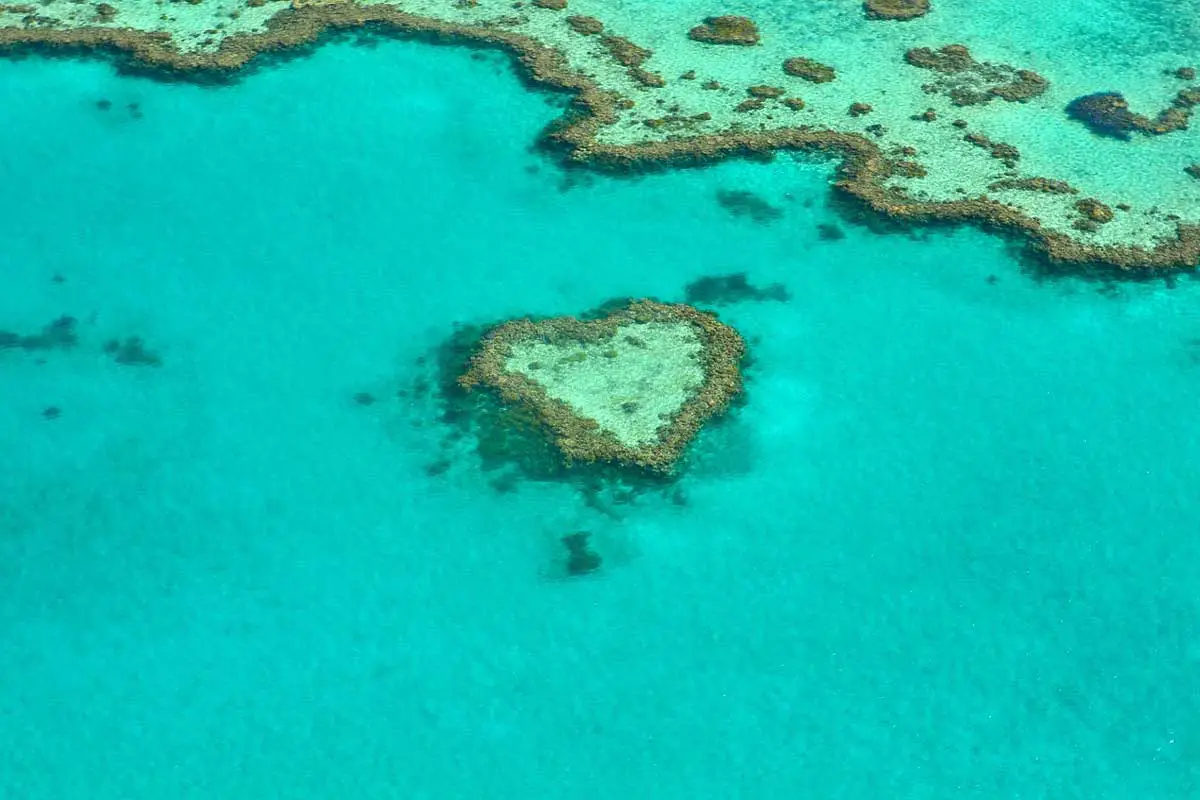
Effects of acidification on coral reefs of Great Barrier Reef in Australia have been well-known for a long time.
An ocean acidification experiment in 2005 found low levels of Aragonite in seawater to dissolve shells of sea snails exposed to it. A 2009 study which followed up on 64 beds of coral reefs within the Great Barrier Reef found their coral building ability to have declined by 14% since 1990.
In one coral reef experiment, coral skeletal building quickly enhanced when sea water pH levels were restored to pre-industrial levels.
Newer studies, like the one by Nature, show how ocean temperature and salinity has increased whereas seawater pH and Aragonite concentration has declined over the past decade (2009-2019).
Ocean acidification isn’t the only risk factor in the Great Barrier Reef (GBR) decline. Warmer waters lead to coral bleaching, tropical storms, rising sea levels, diseases, different forms of pollution, fishing and invasive species and more specifically the Crown of Thorns starfish.
All of these factors cause increased stress on coral polyps of GBR.
Saving Coral Reefs
Restoring cold water temperature or removing pollutants can help corals recover, but without providing suitable conditions to STAY alive, they are bound to die.
Global bleaching events, once a rarity, are now happening more frequently with greater intensity.
Scientists believe that we are witnessing some of the worst bleaching events in history. These could continue into future until we do something about it soon. This basically means that coral reefs could go from the cradle of marine life to its grave, sooner than we expected.
As responsible humans we can play a major role in prevent oceans acidification. Through bettering our lifestyles, we can save many lives and also help oceans to maintain their pH. For this, we need to take some steps:
- We should decrease fossil fuel emissions and strictly follow reduce reuse recycle strategy.
- We should reduce the use of plastics in our routine and start finding alternatives.
- We should make efforts to reduce greenhouse gas emissions.
- We need to develop an innovative system which informs reef managers about coral reef conditions in real-time.
These actions may not bring bleached corals back from dead, but they can certainly improve conditions of corals left in our world.
